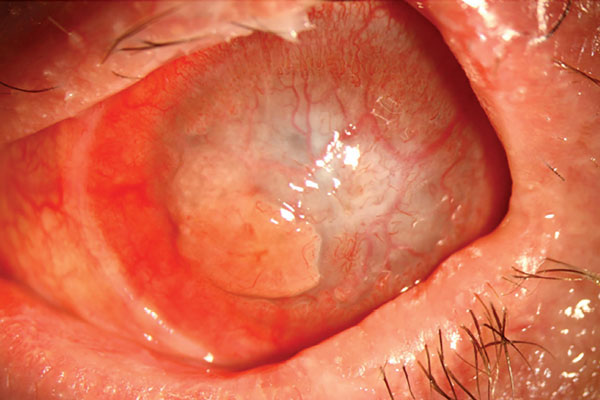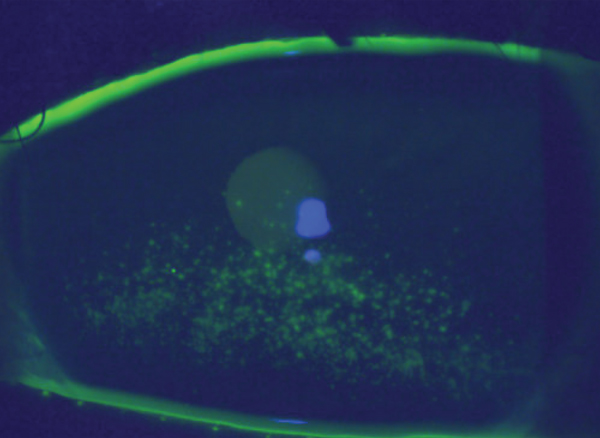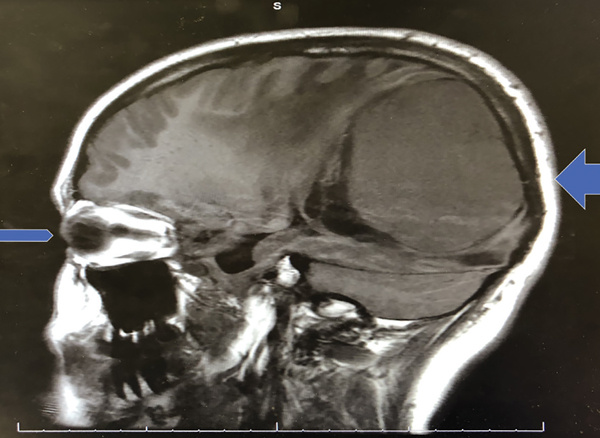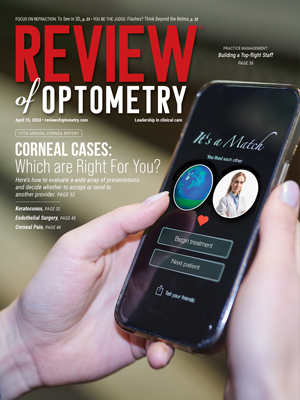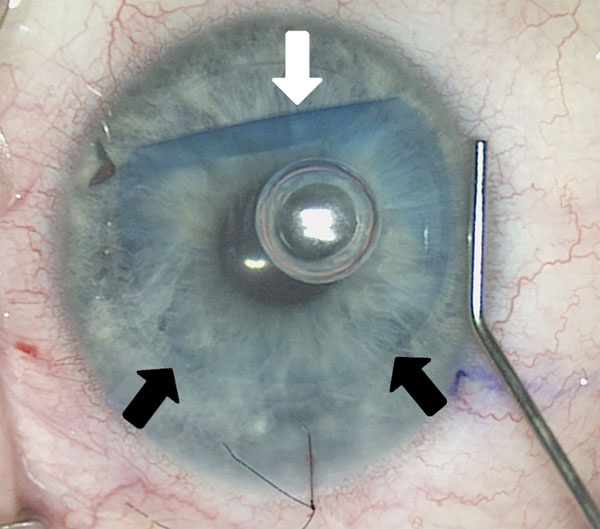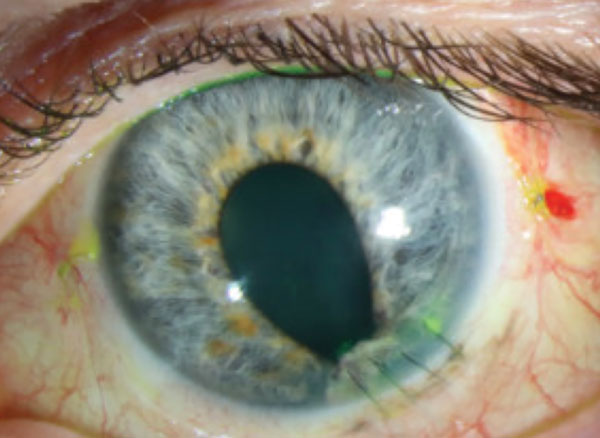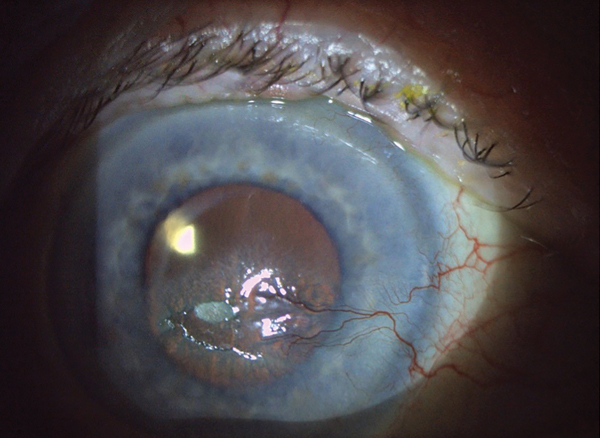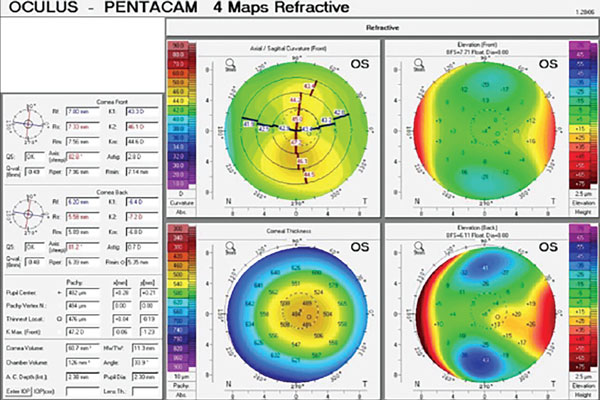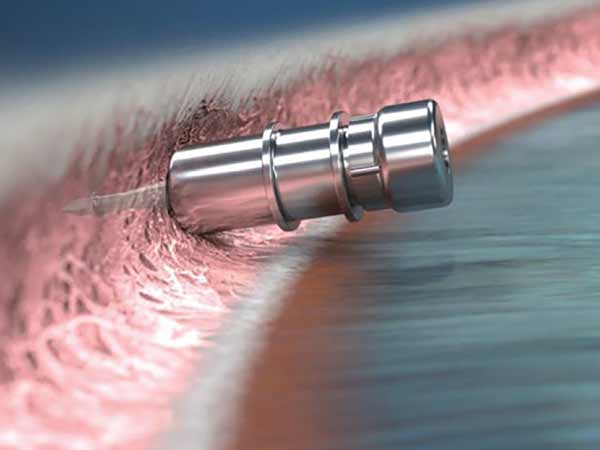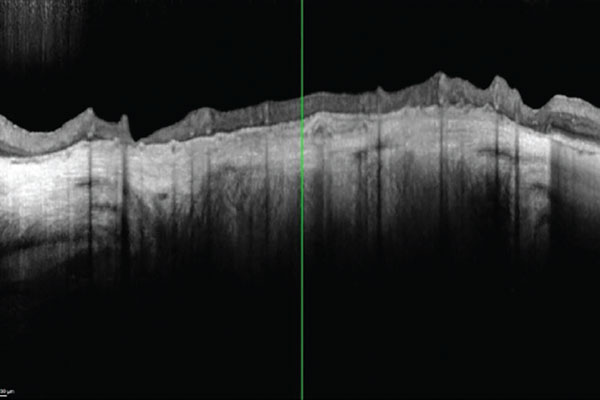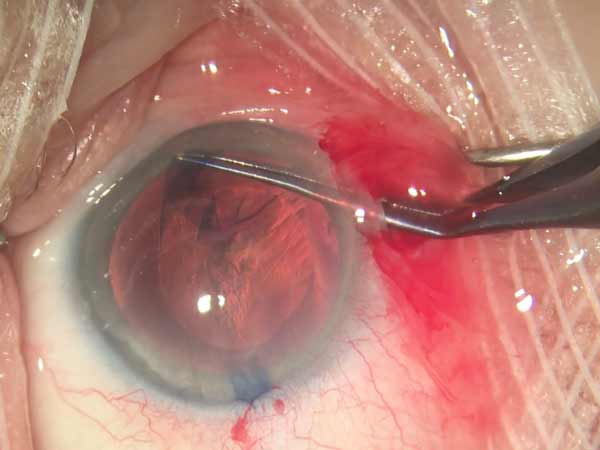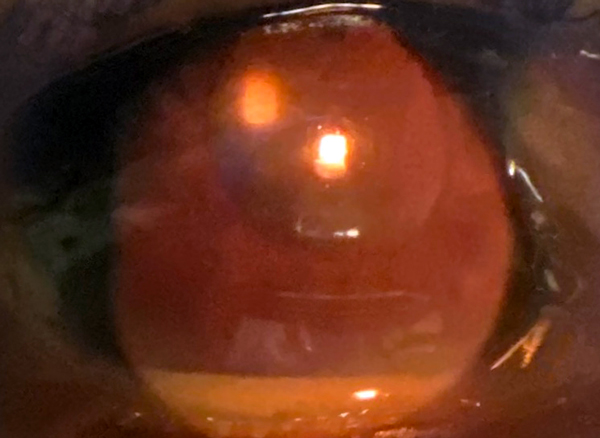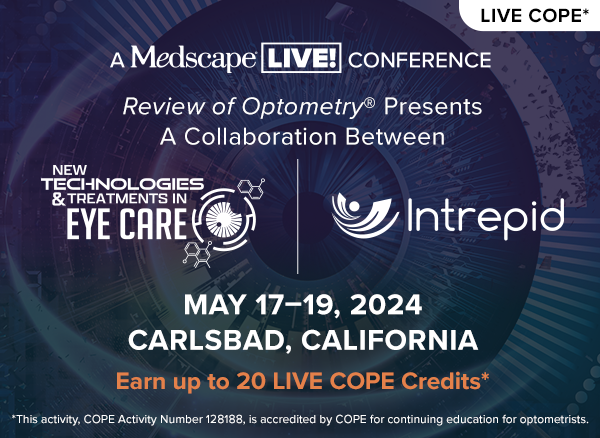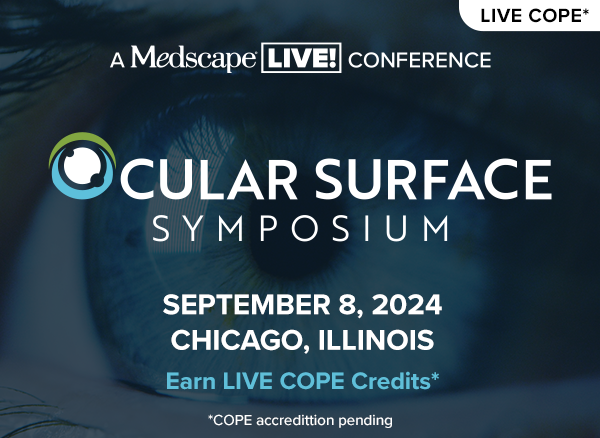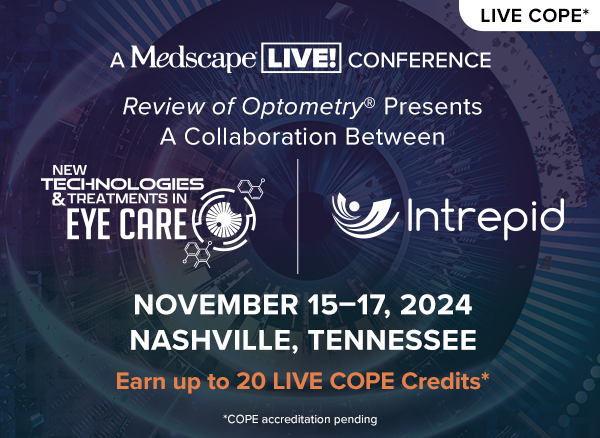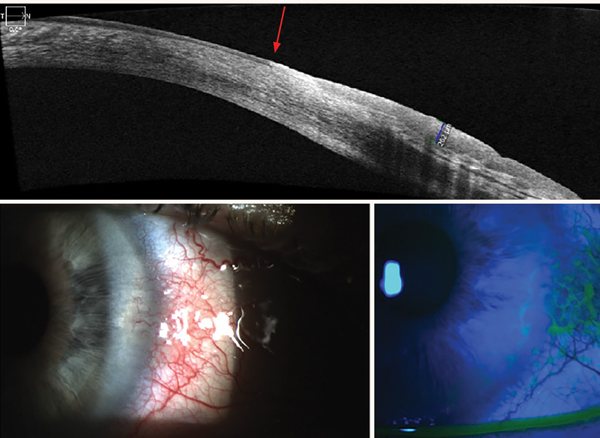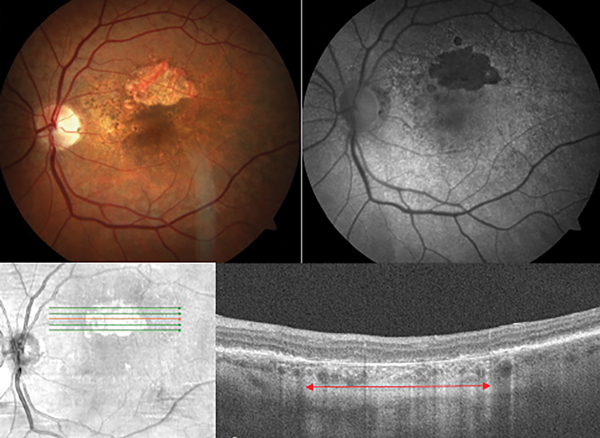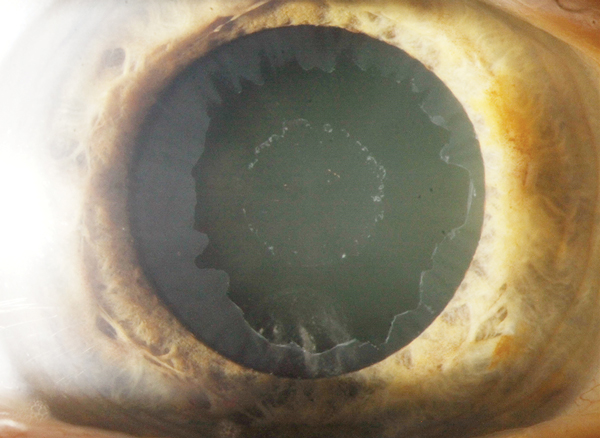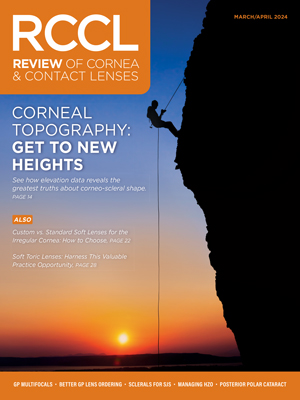Today's Spotlight
Double-edged Sword
A 30-year-old patient presented to the contact lens (CL) clinic with a history of Stevens-Johnson syndrome (SJS). His chief complaints included chronic pain, blurry vision and dryness of the left eye.
Today's Spotlight
Twin Tumor Therapies
Tivdak and Elahere are important advances for disease control in aggressive, often difficult-to-treat gynecological cancers.
Today's Spotlight
Seeing Clearly
Set yourself up for success the next time you interact with a GP lens consultant.
Today's Spotlight
Flashes? Think Beyond the Retina
Limiting your exam of a patient who presents with this complaint can prove to be disastrous.
Today's Spotlight
Reconsider GPs for Presbyopia
Contact lens correction for this condition has evolved.The News Feed
Ganglion Cell Complex Thickness Reduced in AMD
May 01, 2024
Meds that Induce Angle-Closure Glaucoma Identified
May 01, 2024
Uveitis Recurrence Risk Elevated After COVID-19 Vaccination
April 30, 2024
Nutraceutical for Dry Eye Coming This Fall
April 26, 2024
Vision-related QoL Unchanged After Trabeculectomy
April 26, 2024
Smoking Reduces ONH Vessel Density in Glaucoma
April 25, 2024
AREDS Report Updates Simplified Severity Scale
April 25, 2024
Study Finds Prophylactic LPI Cost-Effective for PACS
April 23, 2024
Red Light Therapy Less Effective in Pre-myopia Phase
April 23, 2024
MEWDS Characterized by Unique Photoreceptor Damage Patterns
April 22, 2024
Lamina Cribrosa Pores May Help Identify Severe Glaucoma
April 22, 2024
Optic Nerve Head Structure Affected by Birth Status
April 19, 2024
Patient Survey Describes Dry Eye Management Habits, Burdens
April 19, 2024
Study: Epi-off Accelerated CXL Yields Good Results
April 17, 2024
Heavy Smoking, High BMI Associated With Earlier Onset nAMD
April 15, 2024
Access to Pediatric Eye Care Severely Lacking Across the US
April 12, 2024
Statins Decrease Graves’ Ophthalmopathy Risk
April 10, 2024
Glaucoma Rate 3x Higher in Poor and Minority Populations
April 09, 2024
Look Inside The Current Issue
Features
Advances in Endothelial Surgery: An Update for ODs
DMEK remains the current procedure of choice, but newer techniques may obviate the need for donor tissue entirely. Read on to learn the current state of the art and, perhaps, glimpse the future.
Corneal Cases: Which are Right For You?
Here’s how to evaluate a wide array of presentations and decide whether to accept or send to another provider.
Building a Top-Flight Staff
A successful optometry practice requires a dedicated, passionate team and effective leadership. Here’s how to land ideal candidates and foster a positive office environment to keep them there long-term.
Corneal Pain Presentations: Causes and Interventions
Get up to speed on the basis and manifestations of neuropathic as well as neurotrophic changes.
Sizing Up Keratoconus: The Roles of Topography and Tomography
Three different imaging modalities serve their own purposes for diagnosing and monitoring this condition.
Departments
Attack of the Clones
Artificial intelligence tools may be able to imitate some of a doctor’s skills, but they come up short where it really matters.
Big Things in Small Packages
A new extended-release drug delivery device can help tremendously with compliance—if insurance covers the hefty price tag.
Corneal and Allergy Conundrums
Let’s dive into both worlds and explore new treatments.
Enough Data to Track Glaucoma Patients?
It can be challenging to obtain adequate info when fundamental glaucomatous damage markers are blocked for other reasons.
Flashes? Think Beyond the Retina
Limiting your exam of a patient who presents with this complaint can prove to be disastrous.
Hot Topic
Same-day bilateral cataract surgery, while controversial, is making waves worldwide.
The Enemy Within
A patient presents with anterior uveitis as well as several systemic conditions, plus retinal detachment. What’s going on?
Twin Tumor Therapies
Tivdak and Elahere are important advances for disease control in aggressive, often difficult-to-treat gynecological cancers.
Upcoming Events
Continuing Education
April 2024 • 2.00 Credits
Corneal Pain Presentations: Causes and Interventions
March 2024 • 2.00 Credits
OCT Beyond the Basics: Unlocking the Power of This Essential Tool
February 2024 • 2.00 Credits
Demystifying the Complement System
January 2024 • 2.00 Credits
The Physical Manifestations of Glaucoma and What They Signify
Additional Publications
-
The Value of Real Tears
Francis Mah, MD, and Jessica Steen, OD, FAAO, discuss the importance of a stable tear film, how real tears help maintain the health of the ocular surface and the effect that various dry eye interventions can have on tear film homeostasis.
Sponsored by Viatris A Wider View Of The Retina Advances Care
It’s Time to Talk to Your Patients about Digital Eye Strain
New Developments in Glaucoma
Ophthalmic Product Guide - February 2024
Preservatives in Eye Care: Intrepid Eye Society Consensus Discussion
Review of Cornea & Contact Lenses
-
Custom vs. Standard Soft Lenses for the Irregular Cornea: How to Choose
Learn which approach works best in this case-based article. -
Corneal Topography: Get to New Heights
See how elevation data reveals the greatest truths about corneo-scleral shape. -
Soft Toric Lenses: Harness This Valuable Practice Opportunity
Experts demystify common misconceptions and offer fitting pearls. -
Wave Hello to Wavefront-Guided Sclerals
These lenses are a great option for those with residual higher-order aberrations but also can be used to create excellent multifocals. -
GP Multifocal Contact Lenses: The 2024 Lineup
Recent design advancements give clinicians even more options to help meet patients’ vision demands. -
Empirical Fitting of GP Lenses
Advanced technology has paved the way for a quite easy and successful approach.

Women In Optometry continues to be published online, with regular updates on practice design, practice success, news, trends and perspectives. Visit womeninoptometry.com.
